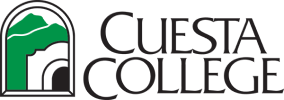
Program Summary
STUDIO ARTS - Associate in Arts for Transfer
The Studio Arts program in Fine Arts prepares students for a major in studio arts at four year institutions. Two tracks are offered: Associate in Arts in Art Studio (AA Art Studio) and Associate in Arts in Studio Arts for Transfer (AA-T in Studio Arts). Studio Arts provides a solid foundation in a wide range of visual art practices including drawing, painting, photography, digital art, printmaking, sculpture, and ceramics. The Studio Arts program provides students with a core curriculum that prepares them with the knowledge and skills required to succeed in the study of Fine Arts. Emphasis is placed on providing the skills and techniques to manipulate forms and materials for creative expression and in developing a vocabulary to understand and engage in critical art discourse. Students develop skills for problem solving and critical thinking, creative and analytical use of the elements and principles of design, and the capacity for experimentation and invention in visual art media.
The Associate Degree for Transfer (AA-T or AS-T) is a special degree offered at California Community Colleges. Students who earn an AA-T or AS-T degree are guaranteed admission to a campus within the California State University (CSU) system, although not necessarily to a specific campus or major. Students who complete an AA-T or AS-T are given priority consideration when applying to a particular program that is similar to the student’s community college major and will be given a special GPA advantage when applying to CSU impacted campuses or majors. Students who are planning to pursue an AA-T or AS-T are strongly advised to meet with a counselor for additional information about this transfer program.
The Cuesta College AA-T/AS-T degree requires:
(1) Completion of 60 semester units that are eligible for transfer to the California State University, including both of the following:
(A) California General Education Transfer Curriculum (Cal-GETC).
(B) A minimum of 18 semester units or 27 quarter units in a major or area of emphasis, as determined by the community college district.
(2) Obtainment of a minimum grade point average of 2.0.
(3) Earning a “C” or better grade in all courses required for the major or area of emphasis. A “P” (Pass) grade is an acceptable grade for courses in the major.